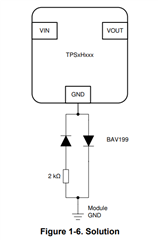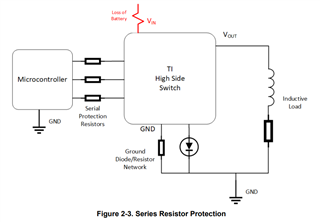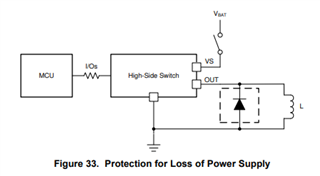Dear team,
we have some questions regarding TPS2H160BQPWP
1) if reverse-current protection is required, do we need to implement booth method1 ( adding a blocking diode) and method2 ( adding GND network) or only one of the method?
2) As per slvaes9a the loss of ground or loss of battery we need following approach on the picture


In case we have a blocking diode on Vs (methode1) do we still need the Gnd network and series resistor if we want protect against loss of gnd and loss of battery?
3)Open-load detection when channel off, DS recommends 20k pull-up while the EVm uses 10k pull-up, how is the pull-up selected ( value and power rating) ?
4) can we connect THERM direct to gnd without pull down resistor?
5) can we connect DIAG_en direct to 1.8V , diagnostic always on ?
6) on what pins are the series blocking resistors needed in case of loss of battery?
7) Can we use BAV99 instead of BAV199? when using GND network.
Best Regards,
d.



